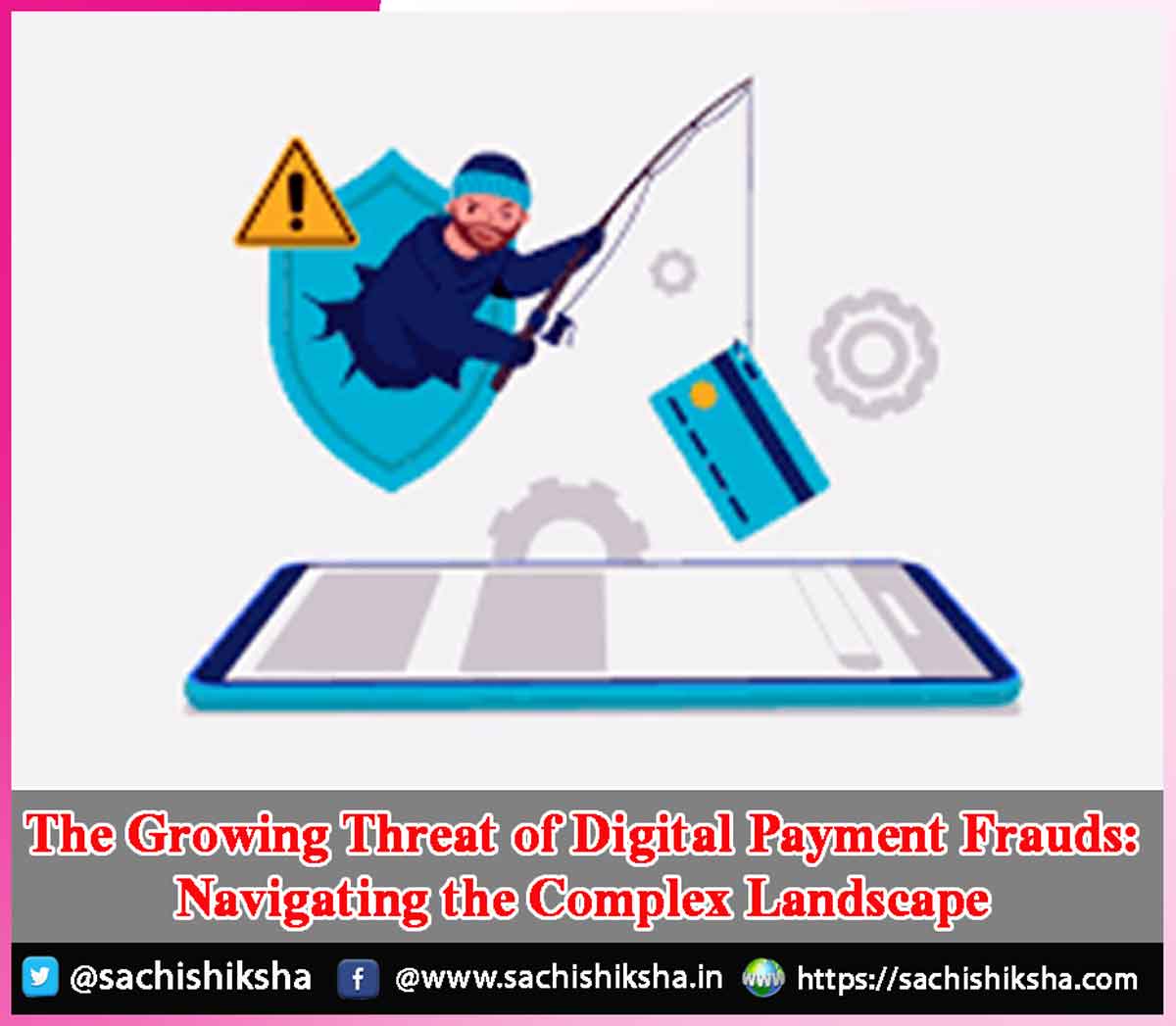The Growing Threat of Digital Payment Frauds: Navigating the Complex Landscape
Introduction In a time when digital transformation is the norm, the convenience of digital payments has revolutionized how we conduct financial transactions. With the rise of mobile banking apps, e-wallets, and online payment platforms, the ease of transferring money has become unparalleled. However, this convenience has brought about a darker side – the escalating threat of digital payment fraud.
As we increasingly rely on digital transactions, understanding the nuances of these frauds becomes imperative to protect ourselves and the financial system’s integrity.
Table of Contents
The Evolution of Digital Payment Systems

Mobile Banking Apps and E-Wallets
Mobile banking apps and e-wallets have become integral to our lives, offering seamless money transfers, bill payments, and contactless transactions. However, these platforms are not immune to fraud. Phishing attacks, malware, and unauthorized access to mobile devices are common methods that fraudsters employ to compromise these systems.
Online Payment Platforms
The ubiquity of online payment platforms has made online shopping and transactions more accessible. However, the sheer volume of transactions processed daily creates opportunities for fraud. Payment card fraud, identity theft, and account takeovers are prevalent in these environments, posing significant risks to consumers and businesses.
Types of Digital Payment Frauds
Understanding the various types of digital payment fraud is crucial for developing effective countermeasures. The landscape is vast and ever-evolving, with fraudsters constantly devising new tactics to exploit vulnerabilities.
Phishing and Social Engineering
Phishing remains one of the most common tactics employed by cybercriminals. Fraudsters use deceptive emails, messages, or fake websites to deceive someone into divulging private information, like usernames, passwords, and credit card details. Social engineering, where attackers manipulate individuals into divulging confidential information, is often intertwined with phishing schemes.
Account Takeovers
Account takeovers involve unauthorized access to a user’s account, often achieved through stolen credentials from data breaches or phishing attacks. Once inside, fraudsters can make unauthorized transactions, change account details, or even lock the legitimate account owners out of their account.
Malware and Ransomware
Malicious software (malware) and ransomware are tools cybercriminals employ to compromise digital payment systems. Malware can infect devices, allowing attackers to monitor keystrokes, obtain login information, and obtain illegal access to financial accounts. Ransomware, on the other hand, encrypts a user’s files and demands payment for their release.
The Role of Data Breaches

Impact on Individuals
For individuals, the consequences of data breaches can be severe. Identity theft, damage to credit scores, and financial loss may result from stolen personal information. Recovering from such incidents is time-consuming and can result in long-term economic consequences.
Impact on Businesses
Businesses are equally vulnerable to the fallout from data breaches. Beyond financial losses, companies face reputational damage, loss of customer trust, and regulatory penalties. Strengthening cybersecurity measures and adopting proactive strategies to prevent data breaches are essential for mitigating these risks.
Mitigating the Threat: Cybersecurity Measures
As digital payment frauds continue to evolve, so must our cybersecurity measures. Both individuals and organizations play pivotal roles in safeguarding digital payment systems.
Two-Factor Authentication (2FA)
Implementing
By requesting two different forms of identity from users, two-factor authentication provides additional protection before accessing an account. This lessens the possibility of unwanted access even if login information is stolen.
Encryption
End-to-end encryption ensures that sensitive information transmitted between parties is secure and cannot be intercepted by unauthorized entities. This is crucial for protecting user data during online transactions.
Continuous Monitoring and Fraud Detection
Advanced monitoring systems and fraud detection algorithms are essential for identifying suspicious activities promptly. Real-time alerts and automated responses can help mitigate potential risks before they escalate.
User Education and Awareness
Promoting user education and awareness is crucial in the fight against digital payment fraud. Individuals should be informed about phishing tactics, the significance of using strong passwords, and the dangers of sharing sensitive information online.
Collaborative Efforts: Industry and Regulatory Initiatives
Addressing the growing threat of digital payment fraud requires collaborative efforts from the industry and regulatory bodies.
Industry Standards and Best Practices
Establishing and adhering to industry-wide cybersecurity standards and best practices can create a unified front against fraud. This includes secure coding practices, regular security audits, and adopting the latest technologies to fortify digital payment systems.
Regulatory Frameworks
Governments and regulatory bodies are crucial in creating and enforcing frameworks that compel financial institutions and businesses to prioritize cybersecurity. Compliance with these regulations ensures a baseline level of security across the industry.
Conclusion
The convenience of digital payments comes with a price – the ever-growing threat of fraud. While navigating the intricate digital landscape of payment systems, it is imperative to recognize the evolving tactics employed by cybercriminals and take proactive measures to safeguard our financial well-being.
Whether through technological advancements, robust cybersecurity measures, or collaborative industry efforts, addressing the challenges posed by digital payment frauds requires a multi-faceted approach. Only through collective action can we create a secure digital ecosystem that fosters trust and innovation while keeping malicious actors at bay.














































